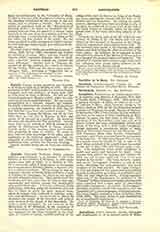

Castiglione, CARLO OTTAVIO, COUNT, philologist and numismatist, b. of an ancient family, at Milan, Italy, 1784; d. at Genoa, April 10, 1849. He was descended from Baldassare Castiglione, the author of the “Cortegiano”. Early in life he displayed a great aptitude for languages and numismatics and quickly acquired a mastery of almost all the Indo-Germanic and Semitic languages. In 1819 he published a description of the Cufic coins in the Gabinetto of Brera at Milan, under the title, “Monete cufiche del musee di Milano” (Milan, 1819). His principal work in Oriental literature is entitled “Memoire geographique et numismatique sur la partie orientale de la Barbarie appelee Afrikia par les Arabes, suivi de recherches sur les Berberes atlantiques” (Milan, 1826). In this he endeavors to ascertain the origin and the history of the towns in Barbary whose names are found on Arabic coins. Outside of Italy he is perhaps best known by his edition, begun in 1819, of some fragments of the Gothic translation of the Bible by Ulfilas, which had been discovered in 1817 by Cardinal Mai among the palimpsests of the Ambrosian Library. At first Castiglione brought out some specimens in conjunction with the cardinal, but later at various times he published by himself a number of fragments of the Epistles of St. Paul. Besides these he wrote numerous unpublished works on linguistics.
EDMUND BURKE

